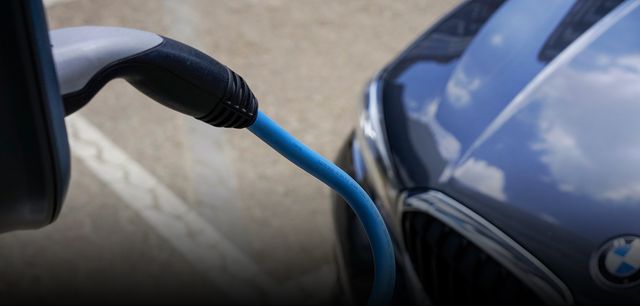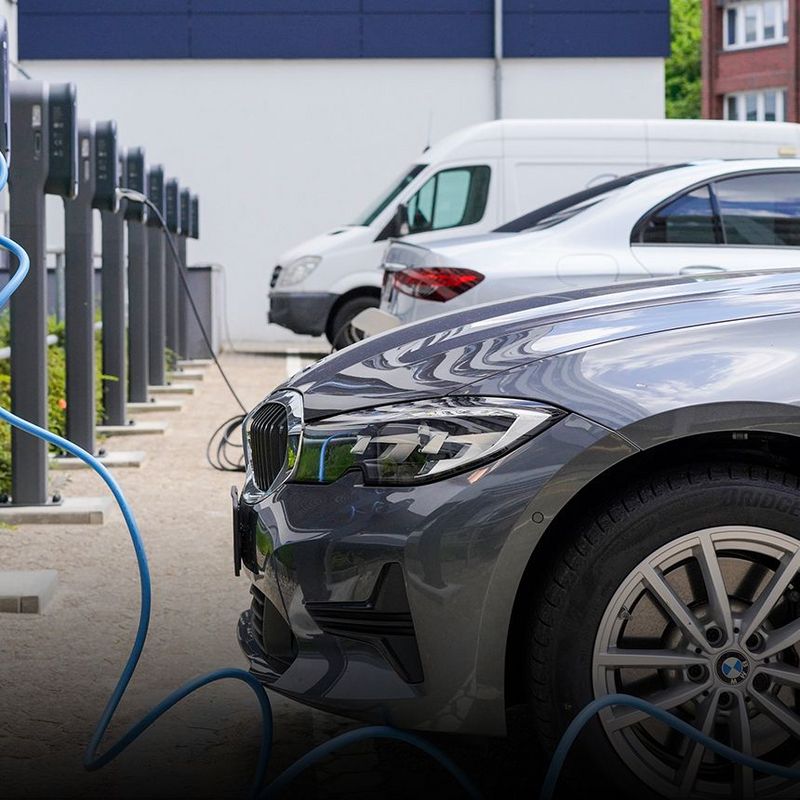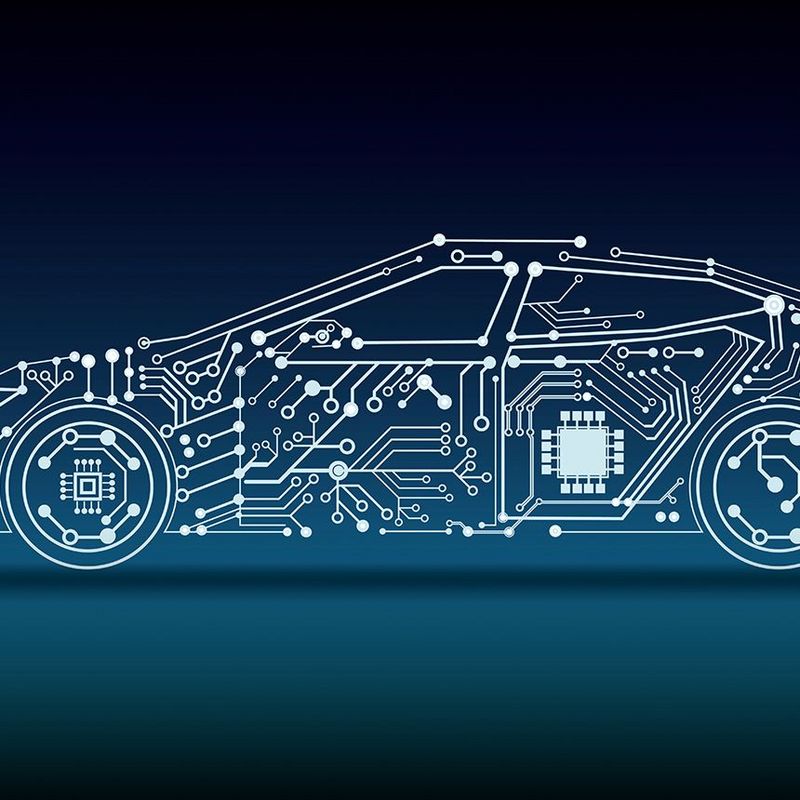23. September 2021
There’s no two ways about it: electric mobility is booming. The IAA Mobility in Munich was dominated by electric power. Since the start of the year, more than one in ten new vehicles registered has been fully electric – and the trend points to further growth. And, as the results of a Forsa survey carried out on behalf of the TÜV Verband (Association) indicate, ever larger numbers of people can either imagine switching to an electric car or are already actively planning to do so. Others are still worried about the purchase price, charging infrastructure and range. We address the most important questions about buying an electric car.
Electric cars for nearly everyone and everything
The range of electric cars on sale has grown significantly in recent years. Where years passed between the launch of a few small and compact electric cars and the advent of the Tesla as the sole newcomer, there has recently been quite a bit of activity, above all in the compact and mid-range car classes. Whether you’re looking for a nippy and agile car for urban use, like the Honda-e or the classic Renault Zoe, which you can also use to visit your grandparents in the country, or an electric car for the whole family, like the VW ID.4 or the Hyundai Ioniq 5, which also have enough room for your summer holiday luggage, today’s range of models already covers a wide spread of needs. Still hard to find in a fully electric version is the estate car so beloved of German drivers, although carmakers like MG and VW intend to launch the first new e-models in this category in the coming years. And whereas the first electric cars were often just converted versions of petrol or diesel models, many of today’s electric cars are based on their own e-platforms. Because the central tunnel is no longer needed and the wheelbase can be extended, they offer more interior space and legroom than conventional cars of the same length.
Tip 1: Electric dray horses
Although trailers have hitherto been the exception rather than the rule for electric cars, more and more of them are now capable of towing loads. It’s already possible to fit a bike trailer to most of today’s electric cars. But the number of EVs capable of towing significant loads is also growing: The BMW iX can haul up to 2,500 kilogrammes, the Hyundai Ioniq 5 and Kia EV5 up to 1,600 kilogrammes each. The all-wheel-drive versions of the VW ID.4 and the Škoda Enyaq can tow up to 1,200 kilogrammes. That is in any case enough for carrying tiles back from the DIY store or fetching a new wardrobe or rolls of turf. But if you have your sights on a camping holiday in Croatia, even the most powerful electric car is currently only suitable with plenty of caveats - after all, towing a big and heavy caravan behind you will virtually halve your range. Although the same is also true for a conventionally powered car, it is of course much more noticeable with an electric vehicle. What’s more, many of the charging parks on the motorway network aren’t yet designed to take vehicles towing loads. In principle it’s entirely possible to tow a caravan a shorter distance, for instance from Berlin to the Baltic, behind an electric car. If you aren’t in a hurry or on the run, you can also think about covering longer distances.
Tip 2: Going beyond range anxiety
How far will I get with which electric car? And will I actually get to my destination? These questions still exercise most prospective buyers. But the fact is that , thanks to improvements in battery technology, the ranges of electric cars have increased markedly in recent years. Currently at the head of the electric pack is the Mercedes EQS, with a range of 770 kilometres as measured according to the current WLTP cycle. But even lower-end electric cars in the compact and mid-sized classes are clocking up WLTP ranges in excess of 400 kilometres. If you are looking for guidance as to the everyday ranges of the common electric cars, you can, for instance, consult the ADAC’s eco-test. A long range is not necessarily indicative of an energy-efficient vehicle, however: much more relevant here is its battery capacity. And the bigger the battery, the higher the price. If the car you’re interested in comes batteries of various sizes, you should first make a rough estimate of the kinds of distances you actually regularly drive: 91 percent of German commuters cover no more than 100 kilometres – even smaller and cheaper electric cars like the Seat Mii Electric or the Renault Zoe will manage more than twice this distance, even in the winter.
© picture allianceThe all-electric ID.3 from Volkswagen offers a charging power of up to 125 kW, making it "suitable for long journeys" by the ADAC's definition.
Tip 3: Flexibility with fast charging
To allow electric car drivers to get back on the road quickly on longer journeys, their batteries must be able not just to store lots of energy but also to be recharged fast. Before buying, you should consider how often you are going to want to use your EV on journeys that exceed its range. The more often this will be the case, the more important the fast charge function becomes. It can then make sense to order any optional higher charging performance which may be on offer or to choose a different model. According to the ADAC, an electric car counts as capable of long distances if it offers a realistic range of at least 300 kilometres and can charge up at least 200 kilometres’ worth of capacity in half an hour. According to the testers, the latter figure is already achievable with efficient models with a charging capacity of 100 kW. And this is of course becoming the norm with more and more models. Even a small car like the Peugeot e-208 offers a charging capacity of up to 100 kW; the bigger VW ID.3 and ID.4 currently offer up to 125 kW. And where 800-colt technology for very fast charging used to be the sole preserve of high-end vehicles like the Porsche Taycan, it has now found its way into the mid-range model world as well. According to their specifications, the Hyundai Ioniq 5 and its sister model, the Kia EV6, can charge their batteries for up to 500 WLTP kilometres by up to 80 percent in 18 minutes - and this is also borne out in practice.
Tip 4: The charging infrastructure is denser than you think
What’s the point of the optimum charging capacity if you can’t find a charging station – such is the concern of many people. The fact is that, while the development of the public charging infrastructure may still leave something to be desired, a lot has happened in recent times. In March 2021, the BDEW, the German Association of Energy and Water Industries, counted a total of 39,538 charging stations for EVs, every seventh of which is a fast charger. And their growth has not been limited to the motorway network: city dwellers can increasingly charge their batteries at petrol stations or when shopping at DIY stores, furniture stores or supermarkets. And the number of charging points has also increased outside the metropolitan areas in recent years. It has to be said, however, that the charging infrastructure is still unequally distributed between the regions. Among the federal states, Bavaria, Baden-Württemberg and Lower Saxony currently boast the most charging stations per 100,000 inhabitants – and Mecklenburg-Western Pomerania, Brandenburg and Saarland the least. So, if you’re toying with the idea of buying an electric car and are dependent on public charging infrastructure, you should find out in advance whether enough charging stations are available close to where you live or work.
© TÜV NORDA lot has happened in the expansion of the public charging infrastructure.
Tip 5: Charging with home advantage
It goes without saying that the most convenient and cheapest introduction to electric mobility will be vouchsafed to those who have their own charging equipment at home. And if you also have access to a charging station provided by your employer, being set up at home with a charging point will also increase your charging options after you leave work. Where having your own wall-mounted charger fitted at home has until now been the sole preserve of house owners, changes to the law mean that flat owners and tenants can now also arrange for a home charging station to be fitted in the underground car park attached to their block.
Tip 6: Take advantage of government subsidies for your home charging station
The German government subsidises property owners, tenants and landlords to install home chargers with a flat-rate grant of 900 euros. This is subject to the preconditions that the installation is carried out by a specialist electrician, the electricity to be used is derived from renewable sources, and the charger in question is both smart and controllable. A good home charger which is eligible for the grant can already be yours for as little as 700 euros. This does not include connection costs or the laying of the cable from your central fuse box to the charging point by a specialist electrician. The latter will also contact your electricity provider and grid operator to clarify the maximum installed load. You should set up a maintenance contract for the charging point with your electrician right from the outset, provided that they are in the position to offer this short semi-annual inspection without charging for travel expenses.
Tip 7: Don't be scared off by the big price ticket
Are electric cars only something for idealists with big fat wallets? This might once have been true but is no longer the case. There's no denying that the purchase price for an electric car is still higher than that of a comparable petrol- or diesel-driven model. But, thanks to the environment bonus, which was increased to up to 9,000 euros in 2020, the gap between the two has been significantly reduced. The full grant is available for electric cars and fuel cell vehicles with a net list price of up to 40,000 euros. For electric cars with a net list price of up to 65,000 euros, the federal government and the manufacturer will contribute a sum of 7,500 euros. Electric leasing vehicles are also eligible for the subsidy: For leases with a term of 23 months, the full sum is available; in the case of shorter contract terms, the grant is adjusted accordingly. Electric cars profit from subsidies such as the electric mobility bonus of 4000 euros, tax exemption, low energy costs and modest maintenance outlay. This means that some EVs are already cheaper than comparable conventional cars, and others are about the same or not significantly more expensive. And the more petrol costs are forced up by carbon tariffs, the better placed the electric car will be to show off its price advantage – especially for those who charge at home.




